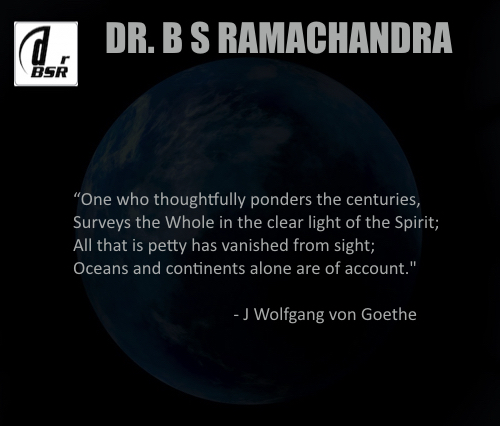Order and Information

Learning is a neuro-cognitive potential that organizes itself spontaneously once the right conditions are met. Spontaneous self-organization is also responsible for evolution. And evolution can be defined as an increase in ordered complexity. So it is helpful to understand the meaning of complexity and order first and how ordered complexity is the most suitable term to base the definition of learning on.
Leonardo: Da Vinci, we have been discussing what is learning. And I do understand to a large extent, the process of learning. But we have not as yet defined what learning is, only how learning takes place...
Da Vinci: You are right, Leonardo. We have outlined the process of learning and are yet to define what learning is. Suffice it to say that learning is an increase in ordered complexity.
Leonardo: Ordered complexity?
Da Vinci: Yes, Leonardo, an increase in complexity that also results in an increase in order. For, increase in complexity need not necessarily result in increase in order. Rather, contrary is what happens usually.
Leonardo: It would be good to define complexity first.
Da Vinci: Sure, Leonardo, complexity is the minimum amount of information required to represent a process. Now this may seem unnecessarily complex! Let me illustrate. Suppose you are learning a given topic. You start by getting acquainted with it. You become familiar. This initiates a thin neural network. As you become more and more familiar, three things happen almost simultaneously. One, the network grows in size and branching. Two, the neural strands in the network thicken as the grey matter or myelin surround them insulating them from neighbouring strands thus increasing the insulation for each. Third, the self grows in complexity and, therefore, becomes more "evolved". Of course, I am talking about evolution in the individual case and this is not to be mistaken for the Darwinian evolution applicable only for populations of organisms. All these three result in increase in complexity.
Leonardo: I get it, familiarity facilitates the growth of the neural networks and the thickening of the neural strand. In a sense, familiarity is like practice in that it strengthens the network. Moreover, familiarity brings in positive emotions like curiosity, surprise, wonder, awe and mystery and diminishes negative emotions like fear, worry and anxiety.
Da Vinci: Well said, Leonardo. And the positive emotions contribute to the growth of the self. So, overall, the complexity increases. Now to order.
Leonardo: What is order?
Da Vinci: Leonardo, there are two good definitions: The first is, order is information that fits a purpose. And the second is, order is an encapsulation of similar differences and different similarities. The first is information oriented and the second geometrical or topological. Let's look at the first, order is information that fits a purpose. In the above case of learning a topic, there is first of all the information content and secondly the direction, the motivation for achieving a certain objective or goal or purpose. Order here is in how that topic fulfils that objective. Suppose that objective is a trivial one like writing a rote-driven exam. The order is then in simply reproducing the topic content. And it is of a low level as there is no new information arising from the learning. And if the objective is in developing a research project, the order is of a high level as there is so much more information than provided by the input.
Leonardo: Da Vinci, that was very clear, the way you described the level of the order.
Da Vinci: Now that you mentioned level, the measure of order is the measure of how well the information fits the purpose.
Leonardo: Ah, that means, in the case of a rote-driven exam also the order is high as the information required to reproduce the topic fits the purpose?
Da Vinci: Yes, Leonardo. So, order according to the first definition is relative to the purpose. But as Ray Kurzweil says, order is not the same as the opposite of disorder! That is, order is not orderliness, in the sense that it is not that which strikes the senses per se, however much the naive notion of order may suggest. It has a rigorous technical meaning that can be subject to measurement.
Leonardo: What about the second definition?
Da Vinci: The second definition is, order is similar differences and different similarities. This is due to David Bohm and David Peat as they describe in their book, "Science, Order and Creativity." According to this you notice similarities among different things and differences among similar things and take them together. This is a geometrical-topological definition and may seem more abstract than the first. Nevertheless, it is very useful in certain situations.
Leonardo: The second definition taken along with complexity would seem to yield a complexified order than ordered complexity!
Da Vinci: That's a good way to put it, Leonardo.
Leonardo: Then, perhaps we could take both ordered complexity and complexified order and see which leads to a better definition of learning.
Da Vinci: I think we can consider both as good measures, Leonardo. And there is yet another aspect of order to consider, and that is psychic entropy.
Da Vinci: It's quite simple when you look at the third entity that we brought in during the example of learning above, and that is the self. For, the self grows by a decrease in psychic entropy. And for this we need to consider flow or optimal experience in learning.
Leonardo: I am aware that flow or optimal experience ensues when there is a perfect balance between challenges and skills.
Da Vinci: Yes, Leonardo. So, during flow, the psychic entropy decreases and this, in a sense, means that psychic order increases. As Mihaly Csikszentmihalyi says,
"When all a person’s relevant skills are needed to cope with the challenges of a situation, that person’s attention is completely absorbed by the activity. There is no excess psychic energy left over to process any information but what the activity offers. All the attention is concentrated on the relevant stimuli."
Leonardo: So psychic order is maximized by the minimization of psychic entropy.
Da Vinci: Yes, this is another way in which order enters into the picture. And then, there is also truth and beauty which are forms of order.
Leonardo: Isn't that more qualitative, Da Vinci? I know many scientists, especially mathematicians and physicists, talk about beauty as a harmonizing principle in their work. And the poet John Keats has it that,
"Truth is beauty, beauty truth, that's all ye know on earth and all ye need to know."
But how do we connect beauty with order?
Da Vinci: Through symmetry for, as Francis Bacon says, "Beauty is the proper conformity of the parts to one another and to the whole."
“Increasing complexity” on its own is not, however, the ultimate goal or end-product of these evolutionary processes. Evolution results in better answers, not necessarily more complicated ones. Sometimes a superior solution is a simpler one. So let’s consider another concept: order. Order is not the same as the opposite of disorder. If disorder represents a random sequence of events, the opposite of disorder should be “not randomness.”
"Simply having more information does not necessarily result in a better fit. Sometimes, a deeper order—a better fit to a purpose—is achieved through simplification rather than further increases in complexity. For example, a new theory that ties together apparently disparate ideas into one broader, more coherent theory reduces complexity but nonetheless may increase the “order for a purpose.”
"Thus improving a solution to a problem—which usually increases but sometimes decreases complexity—increases order. "
- Ray Kurzweil, "The Singularity is Near"
"To attempt to attribute order solely to the object or to the subject is too limited. It is both and neither, and yet some- thing beyond all this: a dynamic process that involves subject, object, and the cycle of perception-communication that unites and relates them. This approach suggests that no constitutive order is an absolute truth, for in reality its ability to lead to coherent and consistent activity is always limited."
- David Bohm and David Peat, "Science, Order, Creativity"


